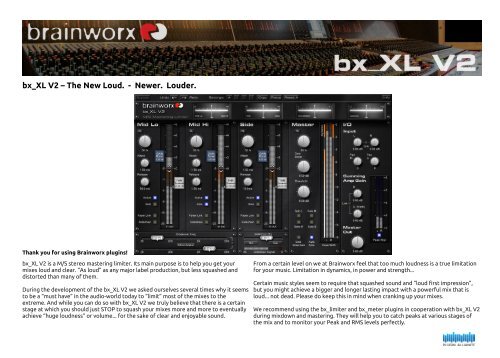Before mastering, the RMS level should be around -12 dB, ensuring sufficient headroom for further processing. Adequate RMS level setting is crucial in the mastering process to achieve optimal audio quality and dynamics.
When mastering audio tracks, starting with the correct RMS level helps maintain clarity, balance, and a clean sound. By setting the ideal RMS level at the beginning, mastering engineers can make necessary adjustments and enhancements without compromising the overall quality of the audio.
It also allows for more effective mastering techniques to be applied, resulting in professionally polished and consistent output. In the world of audio mastering, getting the RMS level right from the start sets the foundation for a successful final product.

Credit: www.yumpu.com
The Basics Of Rms Level
Understanding the RMS level before mastering is crucial for achieving high-quality audio output.
What Is Rms Level?
RMS (Root Mean Square) Level is a measure of the average power of a continuous audio signal. It represents the effective power of the signal and is essential for determining the overall loudness and dynamic range of the audio.
Importance Of Rms Level
RMS Level helps in ensuring consistent volume levels throughout the audio track, preventing sudden spikes or dips in volume that can affect the listening experience. It also plays a key role in maintaining the balance between different elements of the mix, resulting in a polished and professional sound.
Understanding Rms Level In Audio
RMS level is a crucial aspect in audio engineering, determining the average power of a signal over time.
Measuring Rms Level
RMS level is measured by calculating the square root of the mean of the squared values of the signal.
- This provides a more accurate representation of the overall loudness of the audio.
- RMS level accounts for the energy in the signal and is less influenced by sudden peaks.
Rms Level Vs Peak Level
RMS level signifies the average energy of the signal, while peak level indicates the highest amplitude reached.
- RMS level offers a more balanced view of the audio’s volume, unlike peak level which focuses on individual spikes.
- Peak level measures the highest point of the signal, often occurring in transients or sudden loud sounds.
Optimizing Rms Level For Mastering
Before mastering a track, it’s crucial to optimize the RMS level for achieving the best sound quality. The RMS level, or Root Mean Square level, refers to the average level of a signal. By optimizing the RMS level, you can ensure that your music translates well across different playback systems and maintains a balanced dynamic range.
Target Rms Levels
When it comes to mastering, it’s important to have a clear understanding of the target RMS levels to achieve the desired sonic characteristics. Here are some common target RMS levels based on the genre:
| Genre | Target RMS Level (in dBFS) |
|---|---|
| Pop/Rock | -10 to -8 |
| EDM | -10 to -6 |
| Hip-Hop/Rap | -8 to -5 |
Techniques For Adjusting Rms Levels
Adjusting RMS levels can be achieved using various techniques to ensure the optimal sonic characteristics:
- Compression: Using compression to control the dynamic range and bring the RMS level within the target range.
- EQ: Applying EQ to balance the frequency spectrum, which can impact the perceived loudness and RMS level.
- Saturation: Utilizing saturation to add harmonics and richness, contributing to a desirable RMS level.
By optimizing the RMS level based on the genre-specific targets and employing techniques such as compression, EQ, and saturation, you can enhance the overall sound quality of your music before the mastering phase.
The Impact Of Rms Level On Mastering
When it comes to audio mastering, one key factor that can significantly impact the final outcome is the RMS level. RMS (Root Mean Square) level refers to the average volume of a track, and it plays a crucial role in enhancing the overall quality and balance of the sound. In this article, we will explore the impact of RMS level on mastering, discussing how it affects clarity, dynamic range, and tonal balance.
Clarity And Dynamic Range
The RMS level of a track directly affects the clarity and dynamic range of the music.
- A higher RMS level enhances the overall loudness of the track, making it sound more powerful and impactful.
- However, if the RMS level is pushed too high, it can lead to distortion and a loss of clarity, as the audio may become compressed or clipped.
- On the other hand, a lower RMS level allows for a wider dynamic range, preserving the nuances and subtleties of the recording, resulting in a more balanced and natural sound.
Tonal Balance
The RMS level also has a significant impact on the tonal balance of a track.
- A higher RMS level tends to emphasize the low-end frequencies, making the track sound heavier and bass-driven.
- Conversely, a lower RMS level allows the mid and high frequencies to shine through, resulting in a more well-rounded and detailed tonal balance.
- By carefully adjusting the RMS level during mastering, audio engineers can ensure that all frequency ranges blend harmoniously, creating a cohesive and enjoyable listening experience.
Tools For Managing Rms Levels
When it comes to audio mastering, one crucial aspect that should never be overlooked is managing RMS levels. RMS (Root Mean Square) levels determine the overall loudness of a track and play a significant role in achieving a polished and professional sound. In order to control and optimize RMS levels effectively, audio engineers rely on a range of powerful tools. Let’s explore two of the most essential ones below.
Compressors And Limiters
Compressors and limiters are indispensable tools in the world of audio mastering. They allow engineers to regulate the dynamic range of a track, ensuring that the softest and loudest parts are balanced and controlled. Compressors work by reducing the volume of louder signals beyond a selected threshold, while limiters prevent the audio from exceeding a specific level altogether. These tools help maintain a consistent RMS level throughout the track, resulting in a more cohesive and professional sound.
Multi-band Dynamics Processors
In addition to compressors and limiters, audio engineers often turn to multi-band dynamics processors to manage RMS levels with precision and finesse. Unlike standard compressors, multi-band dynamics processors divide the audio signal into several frequency bands, allowing engineers to independently manipulate the dynamics of each band. This level of control enables targeted adjustments to specific sections of a track, effectively managing RMS levels without compromising the overall tonal balance. Whether it’s reducing excessive peaks or enhancing the perceived loudness, multi-band dynamics processors provide a flexible and sophisticated solution.
To sum up, when it comes to managing RMS levels in audio mastering, professionals make use of a variety of tools to achieve the desired loudness and dynamic balance. Compressors and limiters help regulate the overall volume, while multi-band dynamics processors provide more specific control over different frequency bands. By employing these tools skillfully, audio engineers can elevate the quality of a track and deliver a polished, professional sound that captivates listeners.

Credit: emastered.com

Credit: emastered.com
Frequently Asked Questions For Rms Level Before Mastering
What Is The Rms Level Before Mastering?
The RMS level before mastering refers to the average loudness of a recording before any adjustments or enhancements are made during the mastering process. It gives an indication of the overall volume level and dynamic range of the audio.
Why Is The Rms Level Important In Mastering?
The RMS level is important in mastering as it helps in achieving a balanced and professional sound. It allows for proper control of the overall volume and dynamics of the audio, ensuring that it sounds good on different playback systems and maintains a consistent level.
How Can I Measure The Rms Level Of A Recording?
You can measure the RMS level of a recording using specialized audio software or plugins. These tools analyze the audio file and provide you with the RMS value, which represents the average loudness of the recording. This measurement helps in understanding the dynamics and making necessary adjustments during mastering.
Is There An Ideal Rms Level For Mastering?
There is no one-size-fits-all answer to this question as the ideal RMS level for mastering may vary depending on the genre, desired loudness, and personal preference. However, a common range is between -14 dBFS and -10 dBFS, as it allows for sufficient headroom and dynamics while still maintaining a competitive loudness.
Conclusion
Mastering the RMS level is crucial for achieving the perfect audio quality. Understanding its impact on the final sound output is essential for any audio engineer. By mastering the RMS level before the final stage, you ensure that the audio maintains its integrity and delivers the desired impact to the audience.